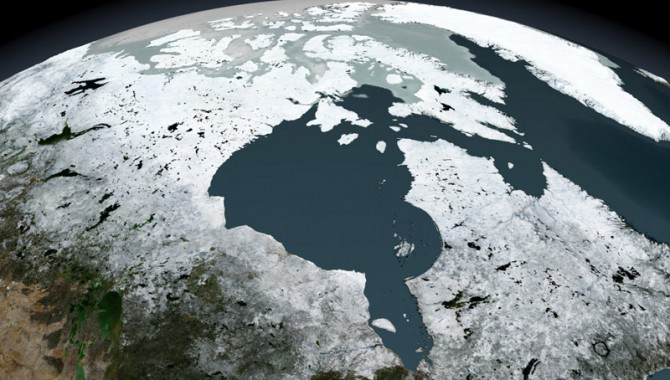The residents of Cambridge Bay, Nunavut — a hamlet of about 1,400 people — welcomed 1,000 visitors on Monday as the giant cruise ship Crystal Serenity lay anchor off the shore.

The cruise ship — part of the fleet run by Crystal Cruises — is taking advantage of the warming Arctic. It is on a 32-day voyage through the region. It is one of the largest in the fleet, with a length of 820 feet and weighing 68,000 gross tonnes. It has 544 cabins and can carry up to 1,070 passengers.
READ MORE: Why the Arctic snow is turning pink and why it’s a bad sign
While the visit was highly anticipated, with the hope of economic benefits for residents, it was also met with some concern.
The Arctic is warming faster than anywhere else on Earth. And it’s this warming that is allowing cruise ships to tour the region.
In the past, any ships that travelled throughout the region needed to be assisted by ice breakers. However, now, with record sea ice loss in the Arctic, there isn’t the need.
While a voyage to a rarely explored part of the world sounds exotic and thrilling, there are some who worry that sending more ships to north will only exacerbate the problem of a warming climate and a changing environment.
“They take advantage of climate change, and they cause even more climate change,” said Michael Byers, a professor at the University of British Columbia who studies Arctic sovereignty and the environment. “That is an enormous problem and also a terrible irony.”
WATCH: Arctic ice melting in 2016 heat

“The main reason why this ship is able to go up to Northwest Passage is climate change — the melting of the Arctic ice, which is threatening the very wildlife that this cruise ship is promising to its passengers,” Elena Agarkova, who tracks shipping for the World Wildlife Fund conservation group told NPR.
But when it comes to the local economy, the reaction is positive.
Members of the Nunavut Arts and Crafts Association (NACA) busily prepared ahead of the ship’s Monday arrival, including carvings, drawings and more.
Of course, a ship loaded with almost the same population as the town itself, brings with it the promise of money pumped into the town, but it’s no guarantee.
The executive director of NACA told Nunatsiaq Online no one knows how much the tourists will spend or if they will at all. She included that the average cruise ship visitor only spends about $75.
Still, people from across Nunavut showed up with goods in hand with the hope of making some sales. A five-day arts and crafts event was held ahead of the arrival.
The Northwest Passage is a route through the Arctic stretching from the Atlantic Ocean to the Pacific Ocean. Ever since explorers came to North America, countries have attempted to find a route for shipping in the north. Sir John Franklin and his crew were lost between 1845–1847 trying to find a route. In 1906, Norwegian explorer Roald Amundsen became the first to sail a ship through the region.
Though the feat has been done, and can be done, it’s still not a route that is frequented by cruise ships, due to the prevalence of ice. But, as the temperature warms, there is less ice to navigate through.
The challenge ahead will be seeking the economic benefit with limited ecological and environmental impacts.
— with files from Reuters


Comments